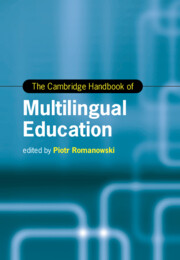Refine search
Actions for selected content:
3386111 results
Part III - Case Studies
-
- Book:
- Representing Future Generations
- Published online:
- 19 September 2025
- Print publication:
- 09 October 2025, pp 143-232
-
- Chapter
-
- You have access
- HTML
- Export citation
Contents
-
- Book:
- Making Merchants
- Published online:
- 19 September 2025
- Print publication:
- 09 October 2025, pp v-vi
-
- Chapter
- Export citation
5 - America’s Coy Lovers
-
- Book:
- Türkiye, Iran, and the Politics of Comparison
- Published online:
- 21 September 2025
- Print publication:
- 09 October 2025, pp 204-250
-
- Chapter
-
- You have access
- HTML
- Export citation
6 - There’s Something Happening Here
-
-
- Book:
- Racial Justice in American Land Use
- Published online:
- 19 September 2025
- Print publication:
- 09 October 2025, pp 147-167
-
- Chapter
- Export citation
Copyright page
-
- Book:
- Making Merchants
- Published online:
- 19 September 2025
- Print publication:
- 09 October 2025, pp iv-iv
-
- Chapter
- Export citation
Contents
-
- Book:
- Human-AI Interaction and Collaboration
- Published online:
- 19 September 2025
- Print publication:
- 09 October 2025, pp v-viii
-
- Chapter
-
- You have access
- HTML
- Export citation
Chapter 6 - Politicians as Celebrity Brands
-
- Book:
- Politicians and Mass Media in the Age of Empire
- Published online:
- 20 September 2025
- Print publication:
- 09 October 2025, pp 216-257
-
- Chapter
- Export citation
Preface
-
- Book:
- Re-Imagining Supply Chain Management
- Published online:
- 22 September 2025
- Print publication:
- 09 October 2025, pp ix-xi
-
- Chapter
- Export citation
Figures
-
- Book:
- Regulating a Thousand Cuts
- Published online:
- 27 September 2025
- Print publication:
- 09 October 2025, pp xvii-xviii
-
- Chapter
-
- You have access
- Open access
- HTML
- Export citation
Tables
-
- Book:
- Politicians and Mass Media in the Age of Empire
- Published online:
- 20 September 2025
- Print publication:
- 09 October 2025, pp x-x
-
- Chapter
- Export citation
8 - Not a Drop to Drink
-
- Book:
- Regulating a Thousand Cuts
- Published online:
- 27 September 2025
- Print publication:
- 09 October 2025, pp 205-237
-
- Chapter
-
- You have access
- Open access
- HTML
- Export citation
Bibliography
-
- Book:
- A Datafied Mind
- Published online:
- 27 September 2025
- Print publication:
- 09 October 2025, pp 195-214
-
- Chapter
- Export citation
Introduction and Overview
-
- Book:
- The Psychology of System Change and Resistance to Change
- Published online:
- 23 September 2025
- Print publication:
- 09 October 2025, pp 1-2
-
- Chapter
- Export citation
Contributors
-
- Book:
- The Cambridge Companion to Christian Liturgy
- Published online:
- 19 September 2025
- Print publication:
- 09 October 2025, pp ix-x
-
- Chapter
- Export citation
Epigraph
-
- Book:
- A Datafied Mind
- Published online:
- 27 September 2025
- Print publication:
- 09 October 2025, pp v-vi
-
- Chapter
- Export citation

The Cambridge Handbook of Multilingual Education
- Coming soon
-
- Expected online publication date:
- October 2025
- Print publication:
- 14 August 2025
-
- Book
- Export citation
Figures
-
- Book:
- British Law and Literature in the Long Eighteenth Century
- Published online:
- 19 September 2025
- Print publication:
- 09 October 2025, pp vii-vii
-
- Chapter
- Export citation
3 - Liturgies and the Reformation
- from Part I - Liturgy Throughout the Ages
-
-
- Book:
- The Cambridge Companion to Christian Liturgy
- Published online:
- 19 September 2025
- Print publication:
- 09 October 2025, pp 42-60
-
- Chapter
- Export citation
Table of Cases
-
- Book:
- International Environmental Law
- Published online:
- 19 September 2025
- Print publication:
- 09 October 2025, pp xxx-xxxv
-
- Chapter
- Export citation
Introduction
-
- Book:
- God, Slavery, and Early Christianity
- Published online:
- 19 September 2025
- Print publication:
- 09 October 2025, pp 1-47
-
- Chapter
- Export citation
